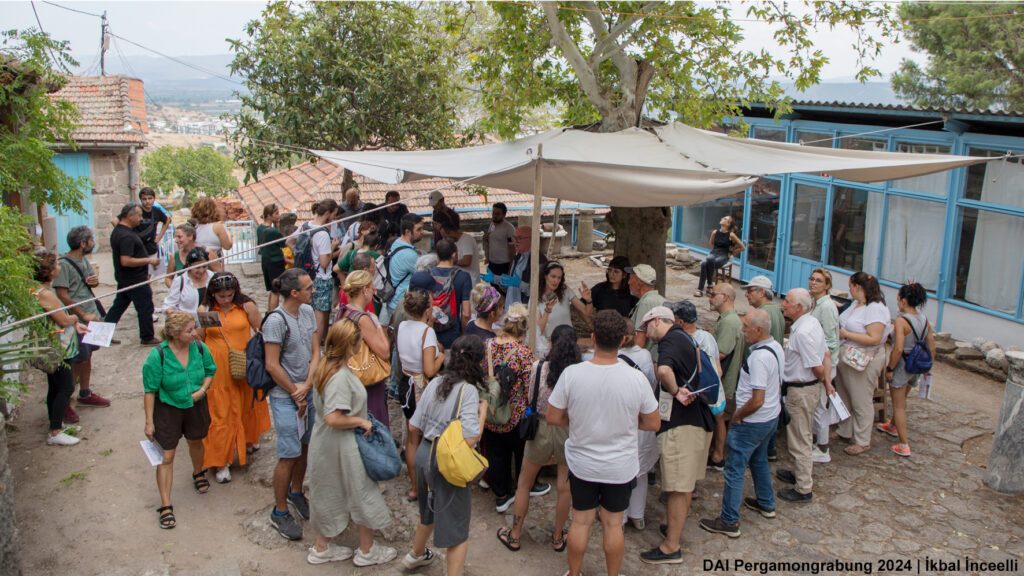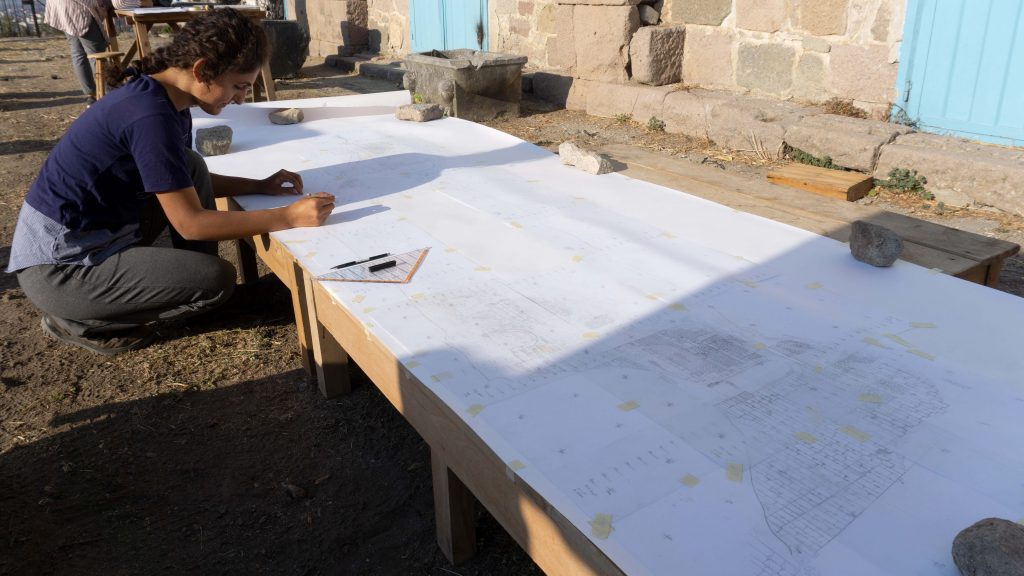Bernhard Ludwig & Ulrich Mania
When you walk through the ruins of the ancient city of Pergamon today or look at the 3D reconstruction of the ancient city hill (Fig. 1), you inevitably ask yourself where the many building stones for the countless streets, houses and monumental buildings came from. Where the stones were quarried and by what routes were they transported to the city and up the steep city hill?
Similar questions are also being asked in our current TransPergMicro project. In interdisciplinary groups we investigate the building economy between the Hellenistic and Roman Imperial periods. Thereby, we search for the sources of building materials in the vicinity of Pergamon and follow, for example, the question: Where did the building blocks for the large buildings like for the Amphitheater or the Asklepieion come from? For this reason, the discovery of extensive andesite quarries four to five kilometers north-northeast of Pergamon was an important contribution to our current studies. A few weeks ago, as part of the archaeological survey of the surrounding area, we came across ancient quarrying traces, extraction walls and spoil heaps on two neighboring hills (Figs. 2-4). Quarry-associated activities such as central stockpiling areas on open terraces or paths for transportation are also preserved.
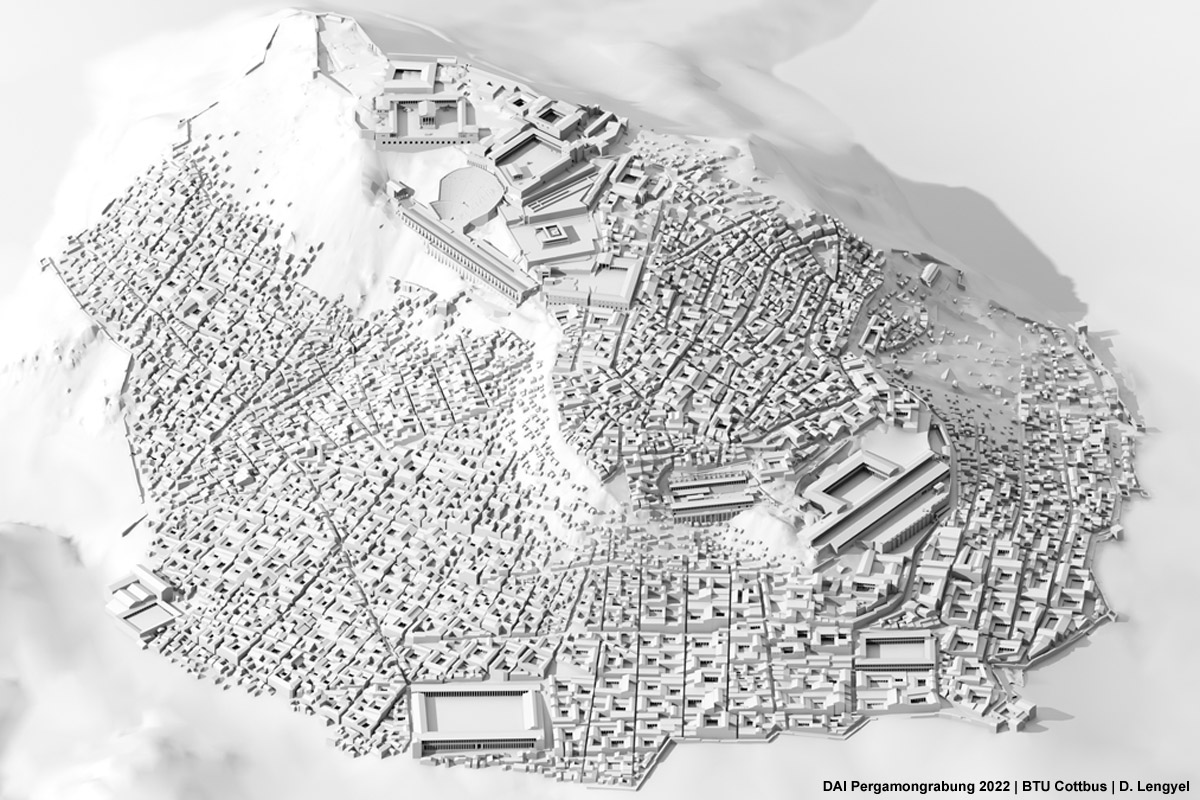
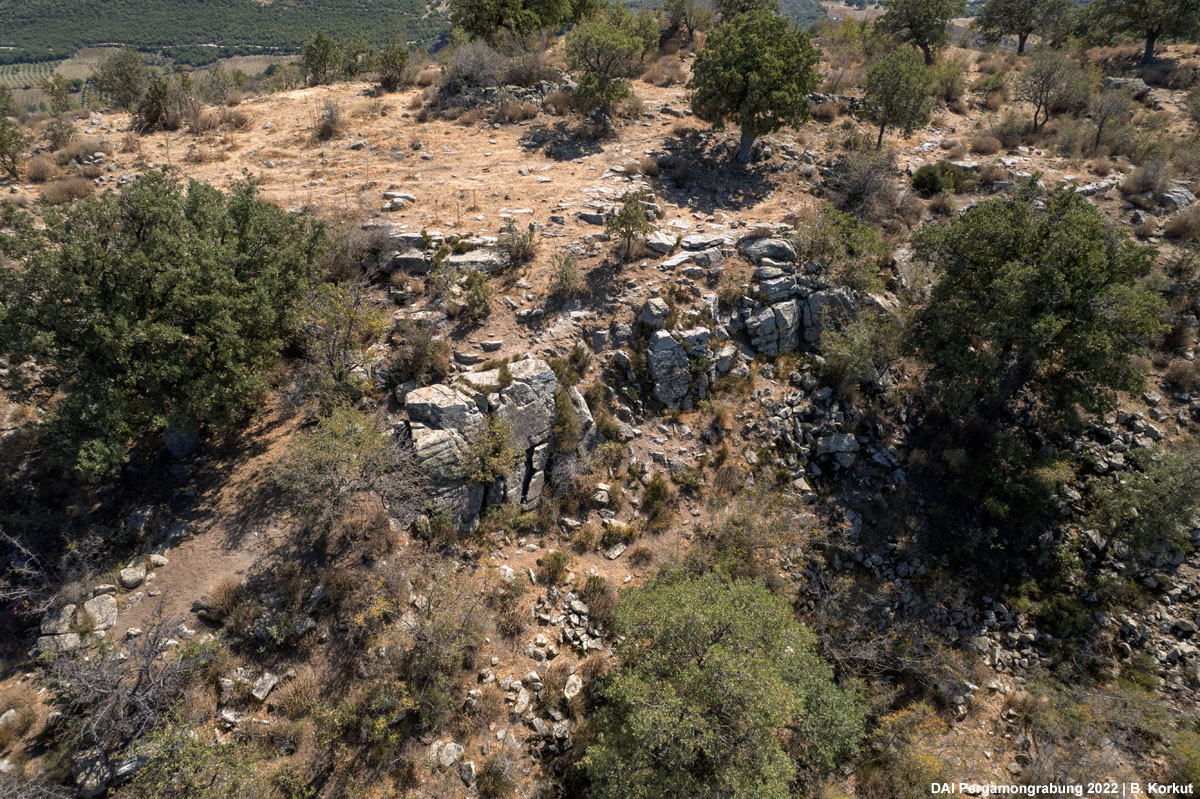
Fig. 2 Extraction walls on Uzun Bayır
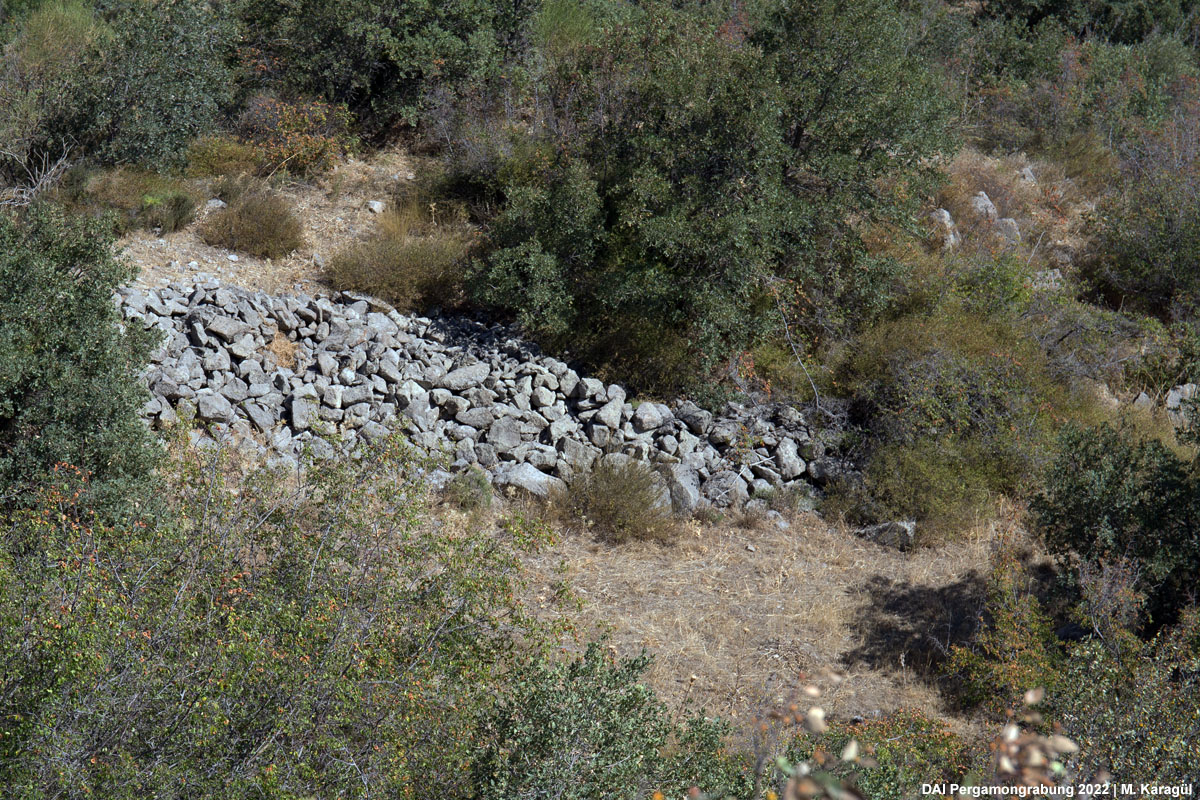
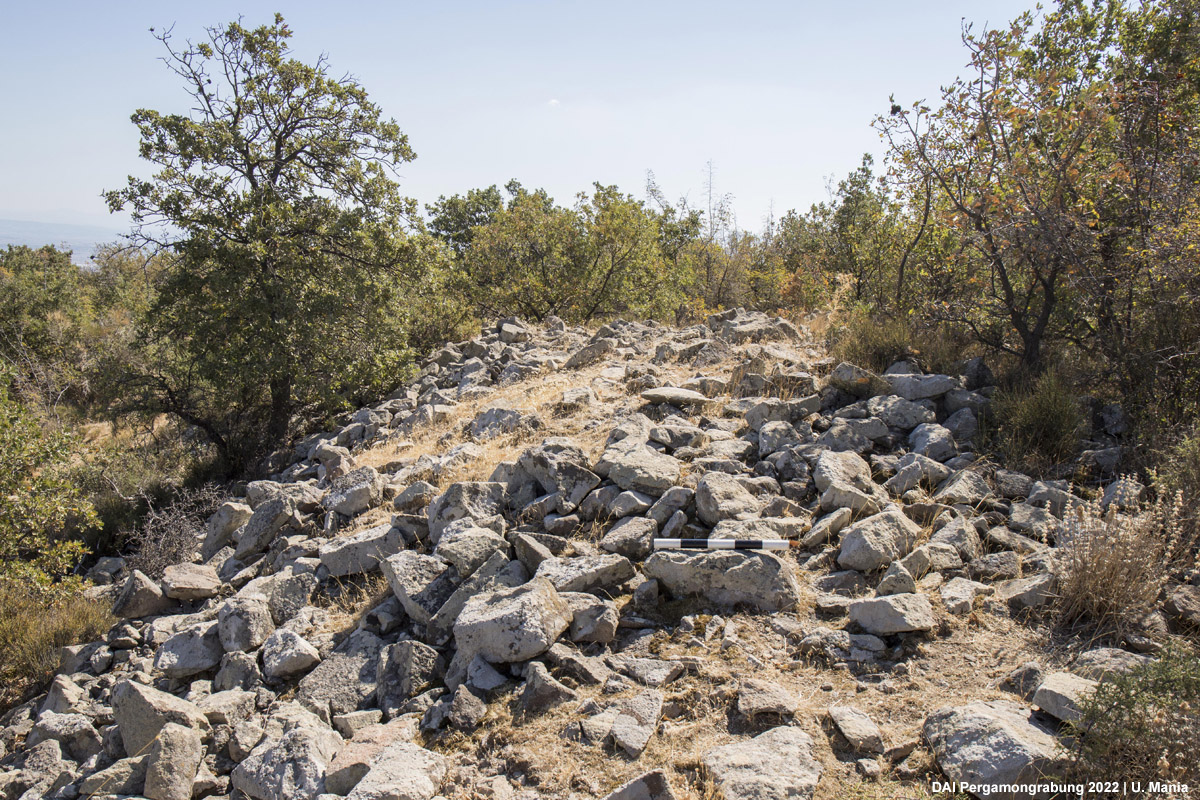
Evidence of quarrying activities was noted throughout the upper parts of the Taş Tepe hill (Fig. 5), which is approximately 200 x 400 m in size. Around its summit one can find several extraction walls where compact stone in huge formats has been removed from the bedrock with the help of lined wedge holes, often set in a v-shaped channel carved in the surface of the rock (Figs. 6-7). Below the quarrying walls, heaps of waste materials show that andesite blocks have already been shaped on site roughly before being transported. Under the summit of Taş Tepe a natural terrace is situated with a size of five to six hectares. The today densely overgrown area is covered with cavities and spoil heaps, which prove extensive quarrying activities. Since the lower parts of Taş Tepe were not used as a quarrying area it is to assume that there was an interest to exploit a certain quality of andesite which was available only on the higher levels of Taş Tepe. It is therefore very likely that the high quality rock was quarried specifically to obtain large blocks for architectural pieces such as architraves, entablatures and column drums.
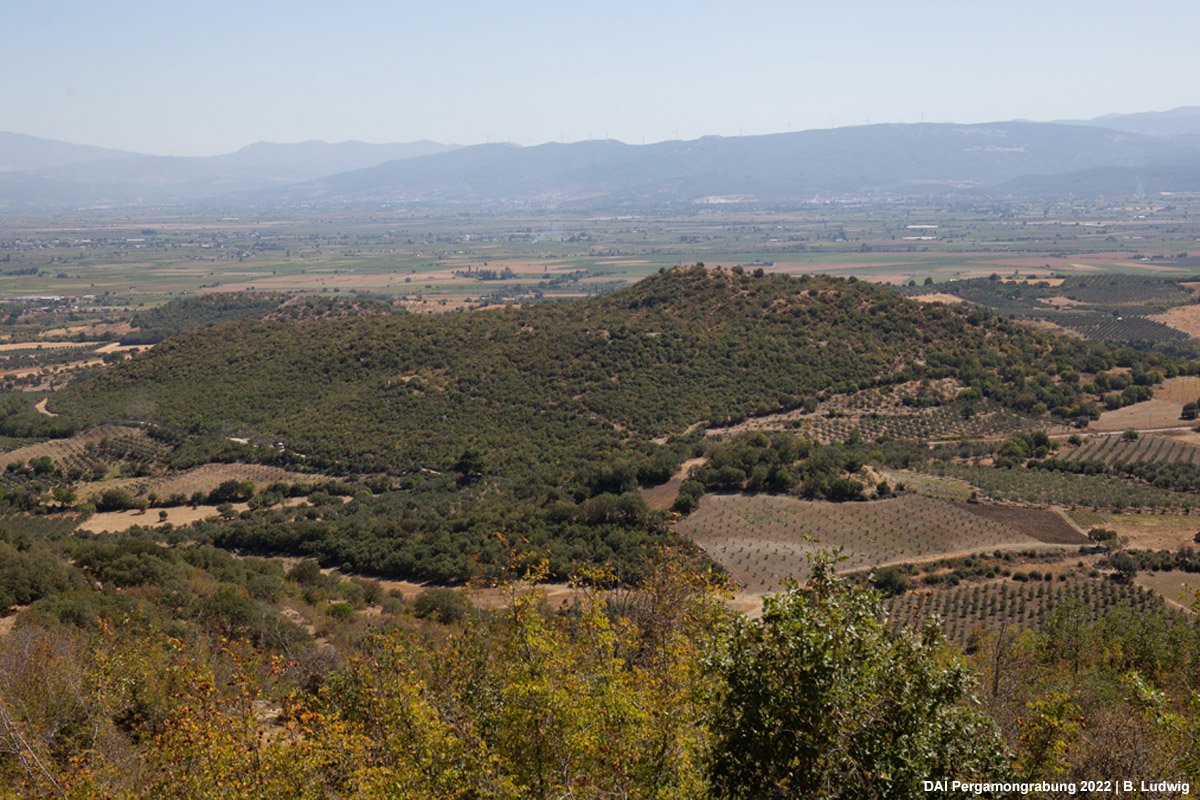
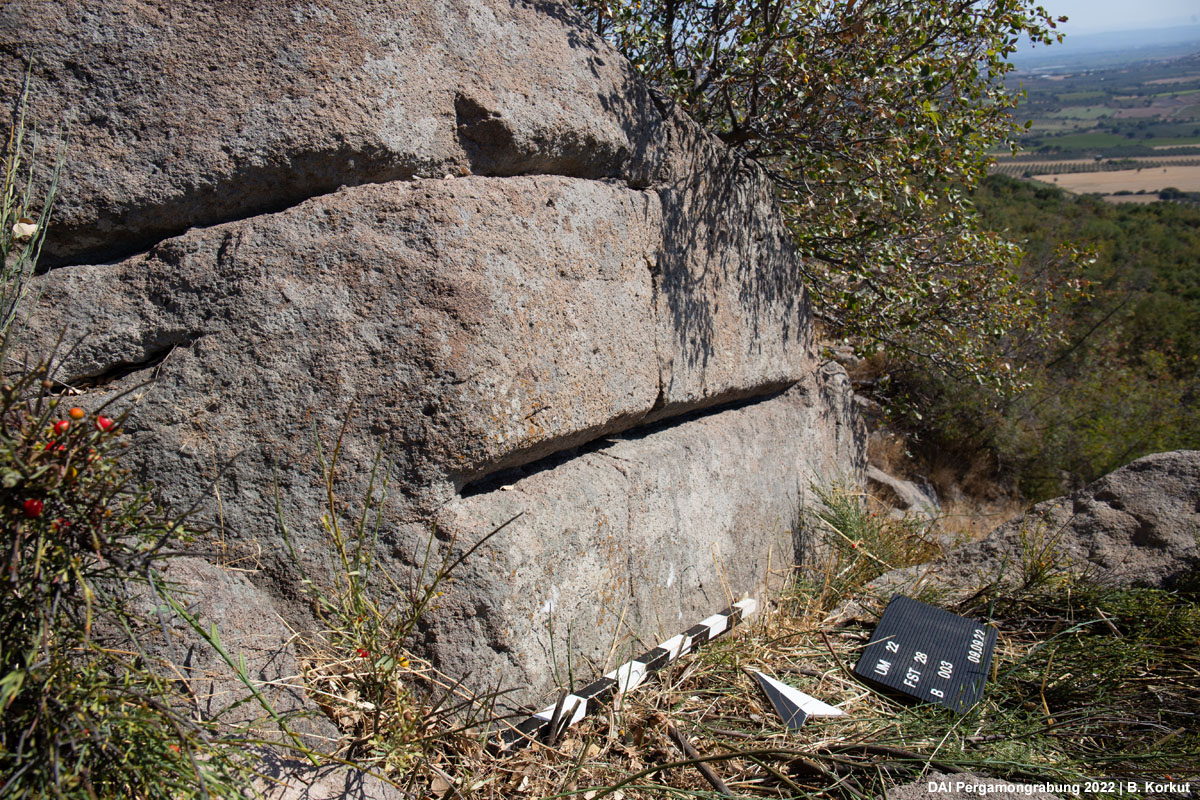
Fig. 6 V-shaped channel in the bedrock on the summit of Taş Tepe
Further quarries (approx. 500 x 500 m) were found on a ridge of the adjacent and very prominent Uzun Bayır hill. A large quarry on its northern slope consists of two staircase-like extraction walls lying one above the other. The quarried material could be removed via ramps at the foot of the quarry walls. They were connected to a road on top of the ridge towards southwest which is very likely of ancient origin. Scattered over the Uzun Bayır hill, further evidence of quarrying activities could be observed. In contrast to Taş Tepe there are no traces of the use of wedges and also the characteristic v-shaped channels in the rock surface do not occur. The andesite has been removed from the bedrock along natural cracks and fissures which occurs at Uzun Bayır quite often. In result the size of the extracted blocks was limited but still big enough to produce ashlars.
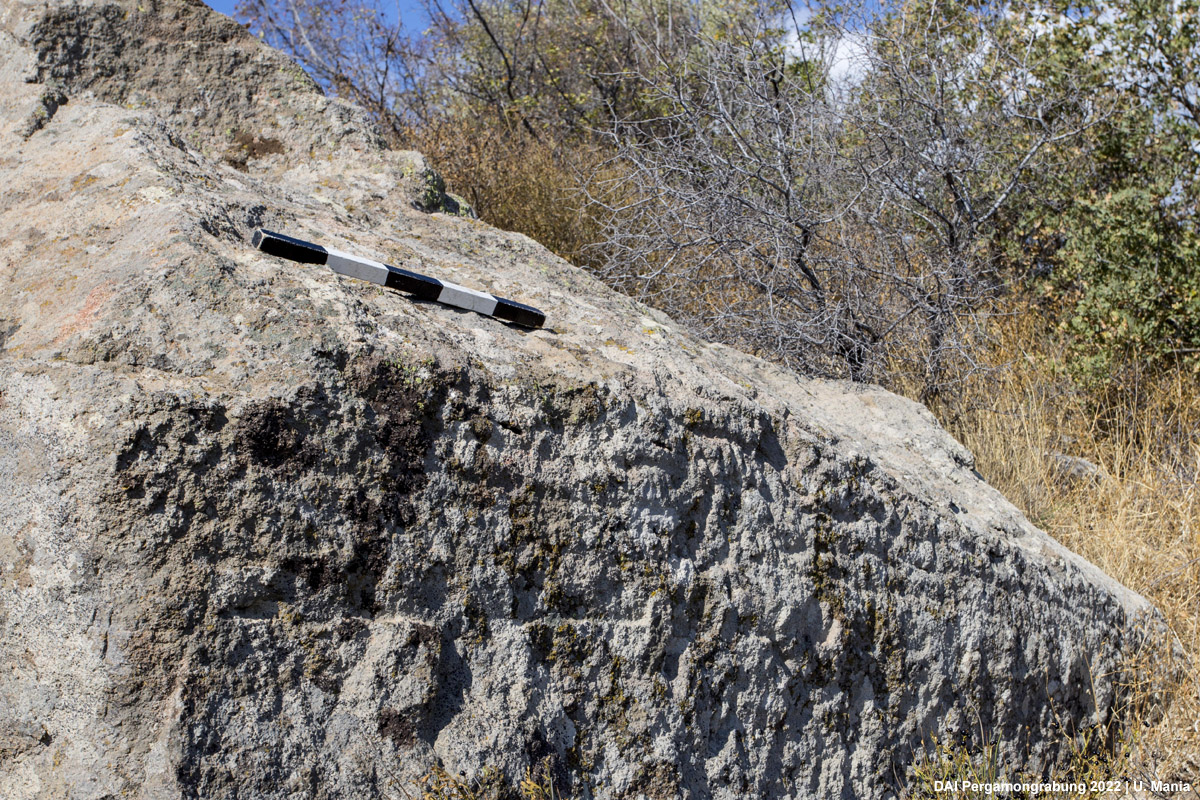
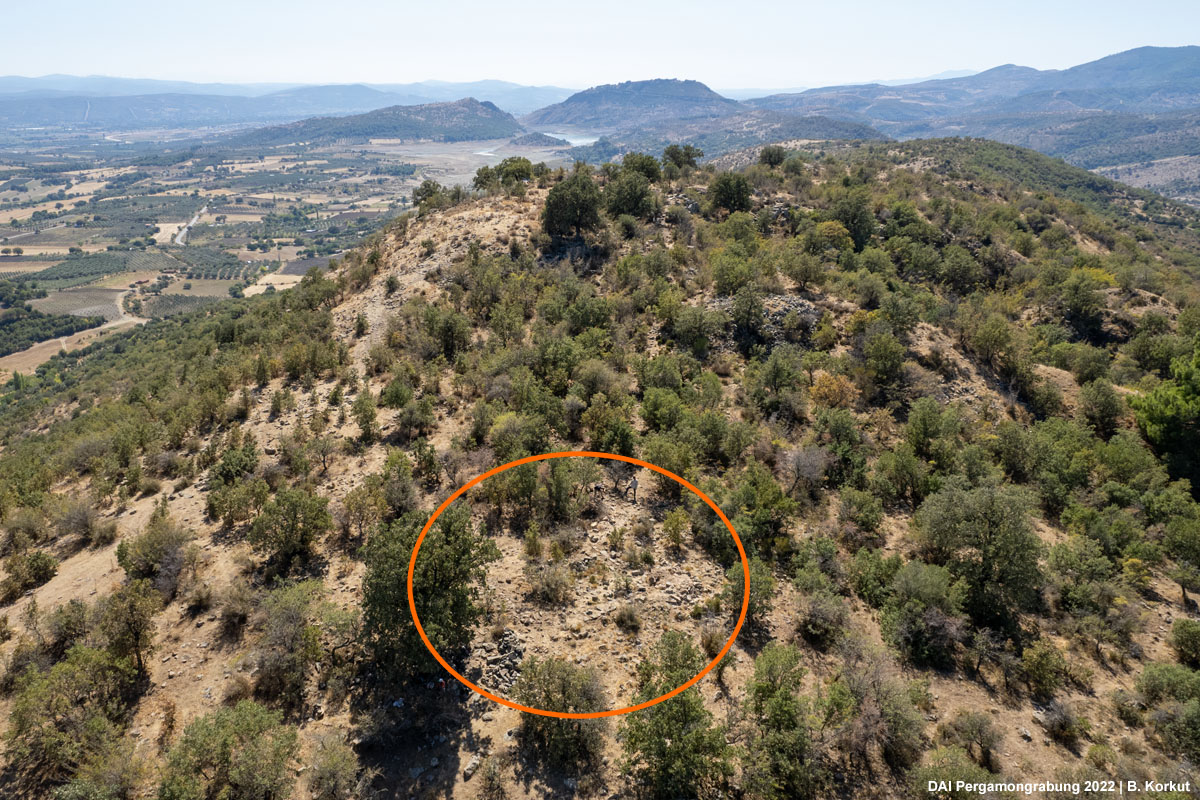
Fig. 8 Location of the building in the foreground and Pergamon in the background
Dating the quarries is admittedly difficult. Indications to their period of use may be provided by building structures of late Hellenistic date located close the extraction walls and spoil heaps at Uzun Bayır (Fig. 8). Further clues may be provided by several signs or letters carved into the rock, the meaning of which is still being investigated. Assuming they are quarry marks, they could provide information on owners or contractors (Fig. 9).
The distinction between the quarries on the two hills according to the extraction method fits very well to the already known quarries at the northern slope of the city hill of Pergamon and on top of the İliyas Tepe opposite of the eastern slope of the city hill: While at the first site bedrock is fissured and does not show any traces of carving, at the second extraction place the compact high quality Andesite shows long rows of wedge holes on the surface. In general, these discoveries have changed our ideas about the importance of the landscape north and east of the city hill. In addition to the production of pottery in the Ketios Valley, andesite has been quarried in a large scale and close to the city (Fig. 10). Access to this important resource therefore was of great importance to Pergamon at least since the Hellenistic period.
Our understanding of the transport logistics of building materials to the city hill of Pergamon can be re-evaluated. It was assumed that the city gates on the upper western and eastern slopes served primarily to transport stone from the quarries on the northern slope of the city hill. We can now assume that almost all of the andesite could be transported directly from the quarries to the city via the roads on the northern slope. By entering the city ›from behind‹, it was possible to avoid the crowded main road along the southern slope.
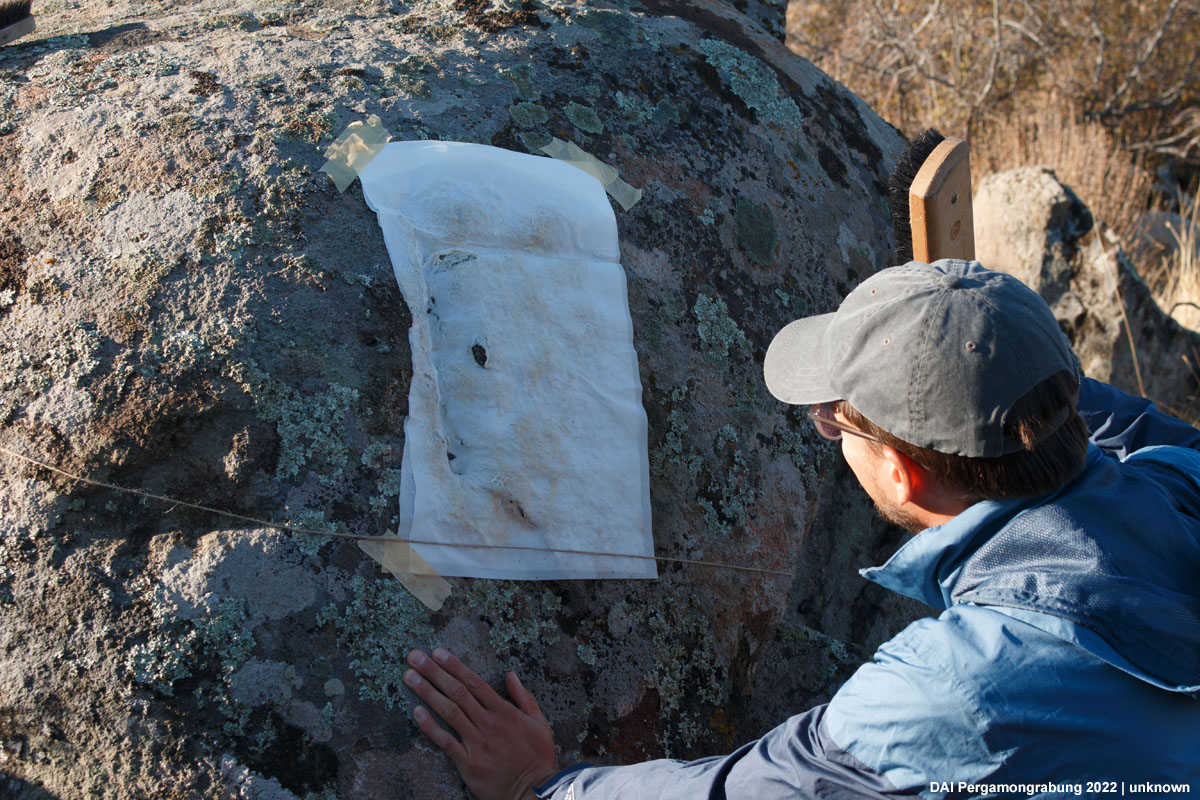
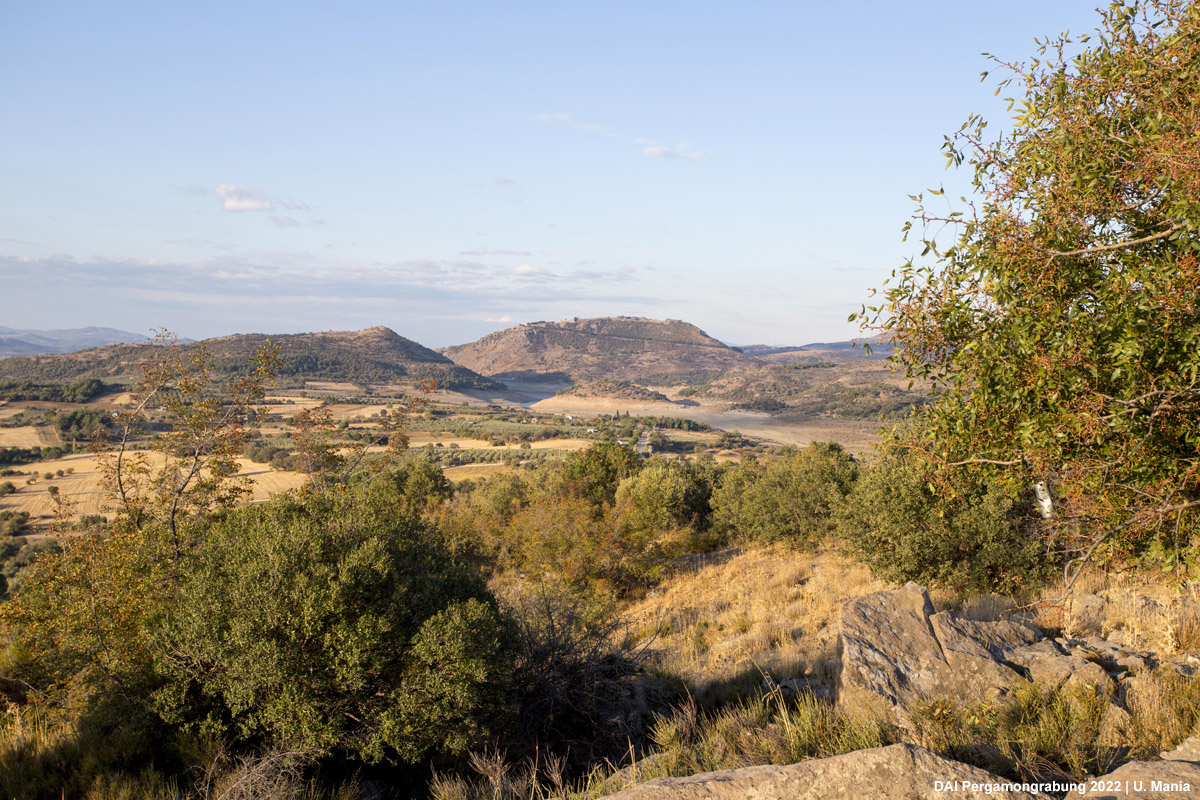
Fig. 10 View from Taş Tepe over the Ketios valley towards the north-eastern slope of the city hill of Pergamon
Finally, the location and extent of the newly discovered quarries also form a valuable basis for interdisciplinary modeling and calculations of transport routes and building construction costs within the framework of TransPergMicro.
We are therefore looking forward to the further evaluation of this year’s survey results and the subsequent further exploration of the quarries, which we will also inform about in this blog.

